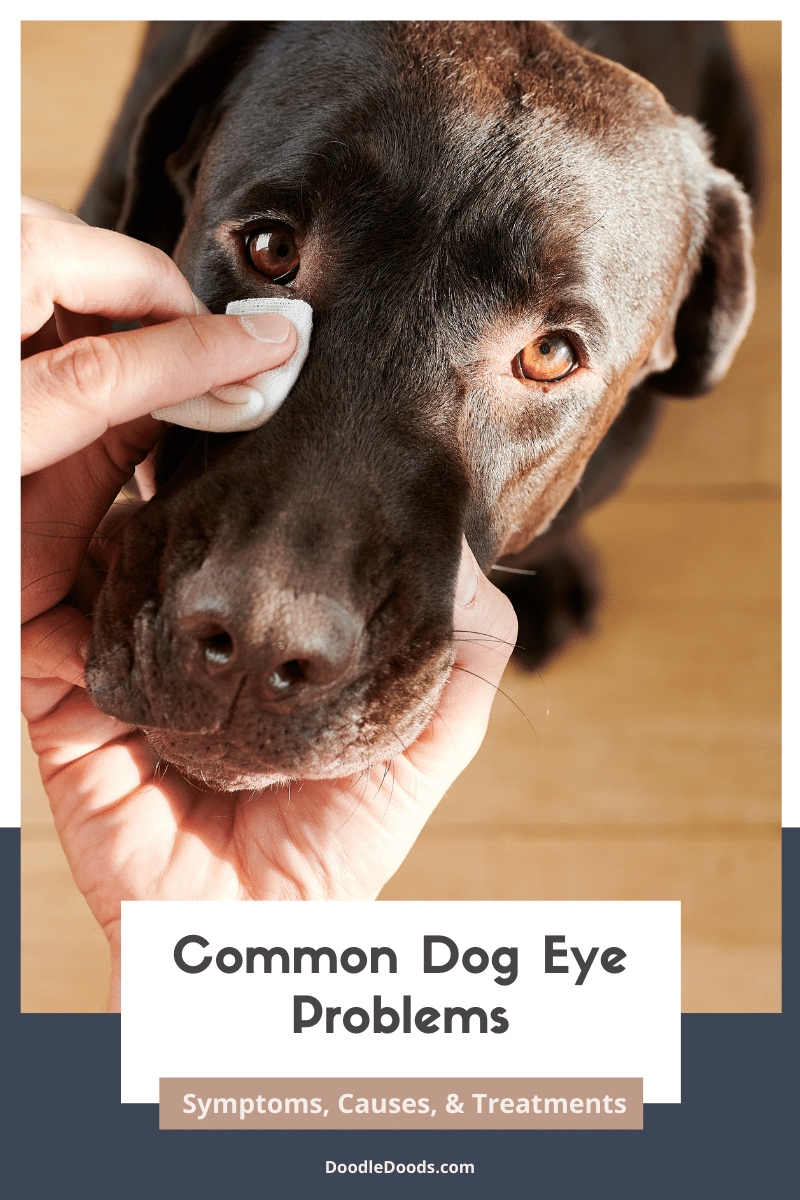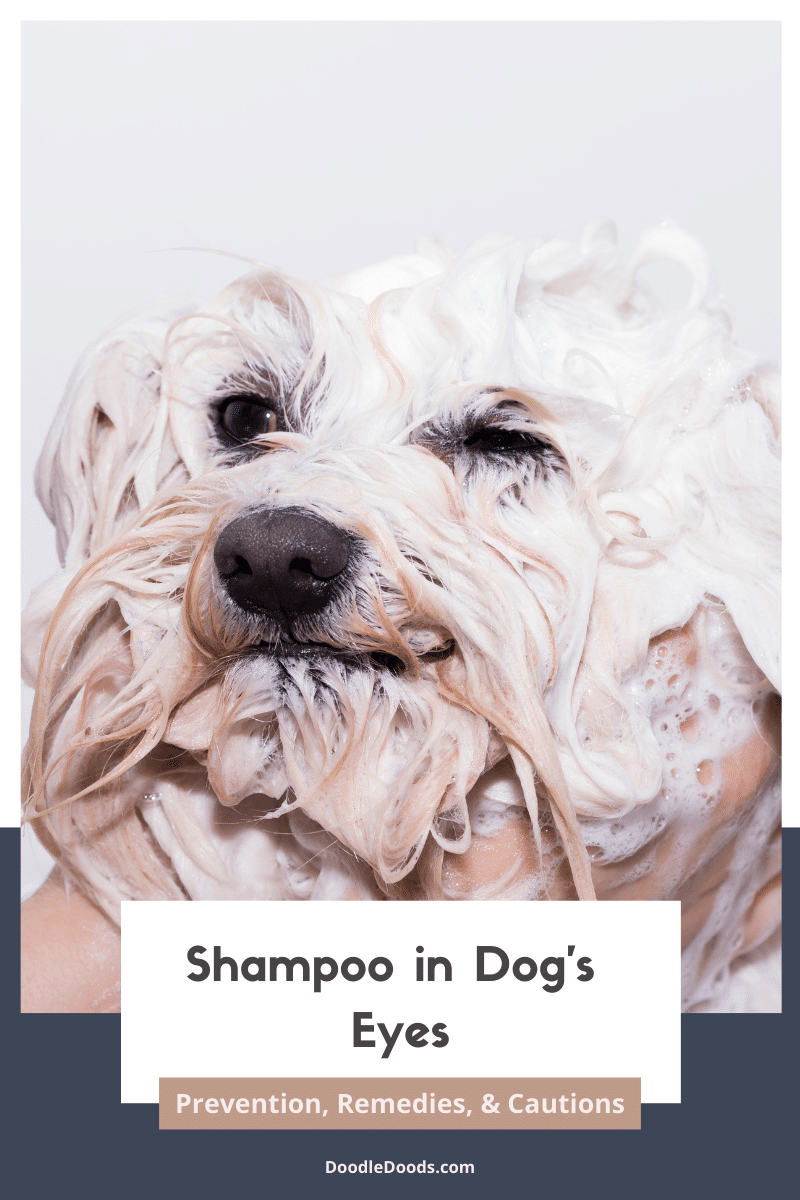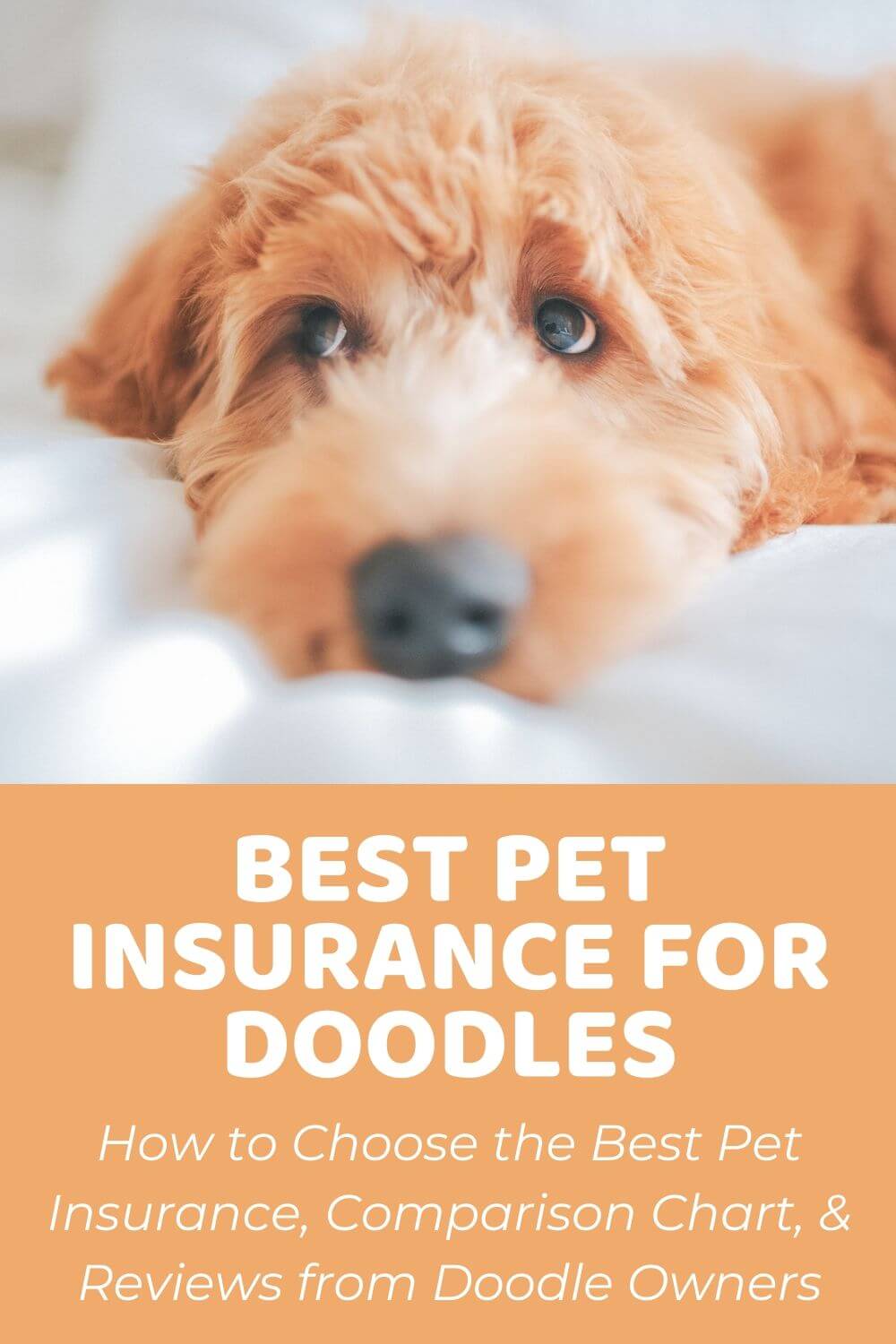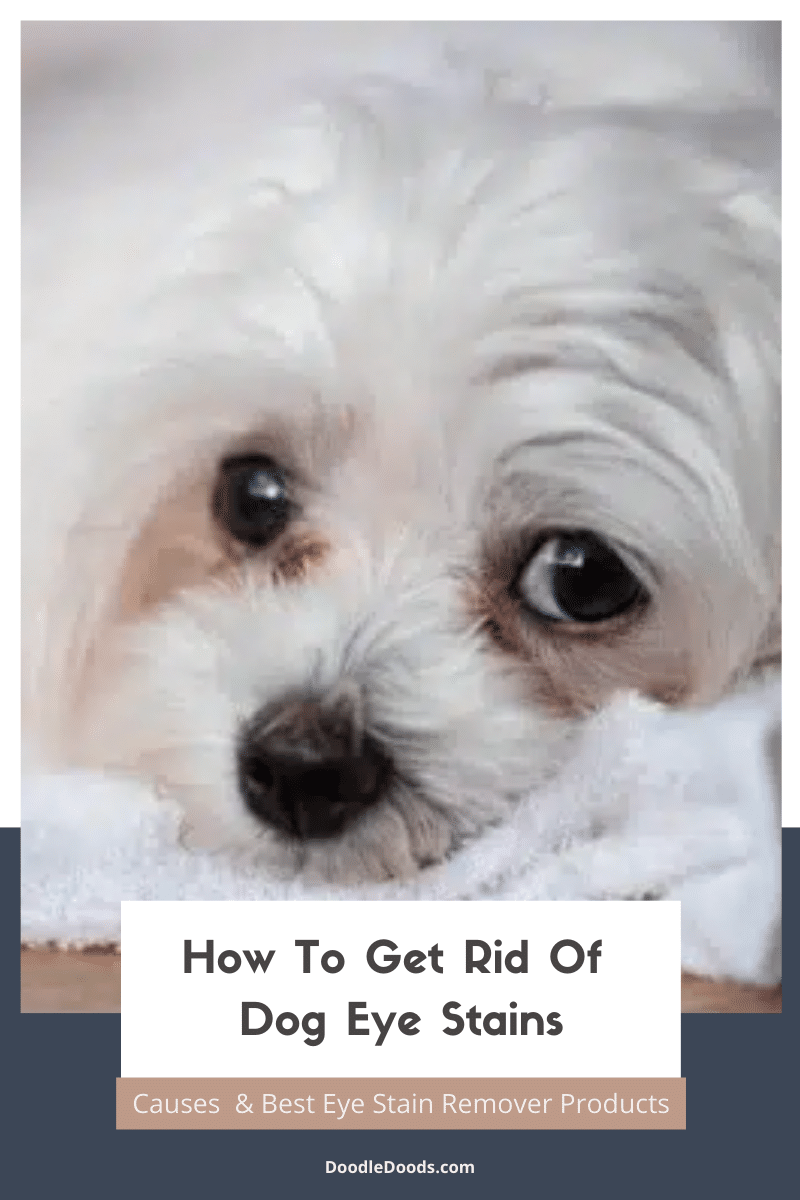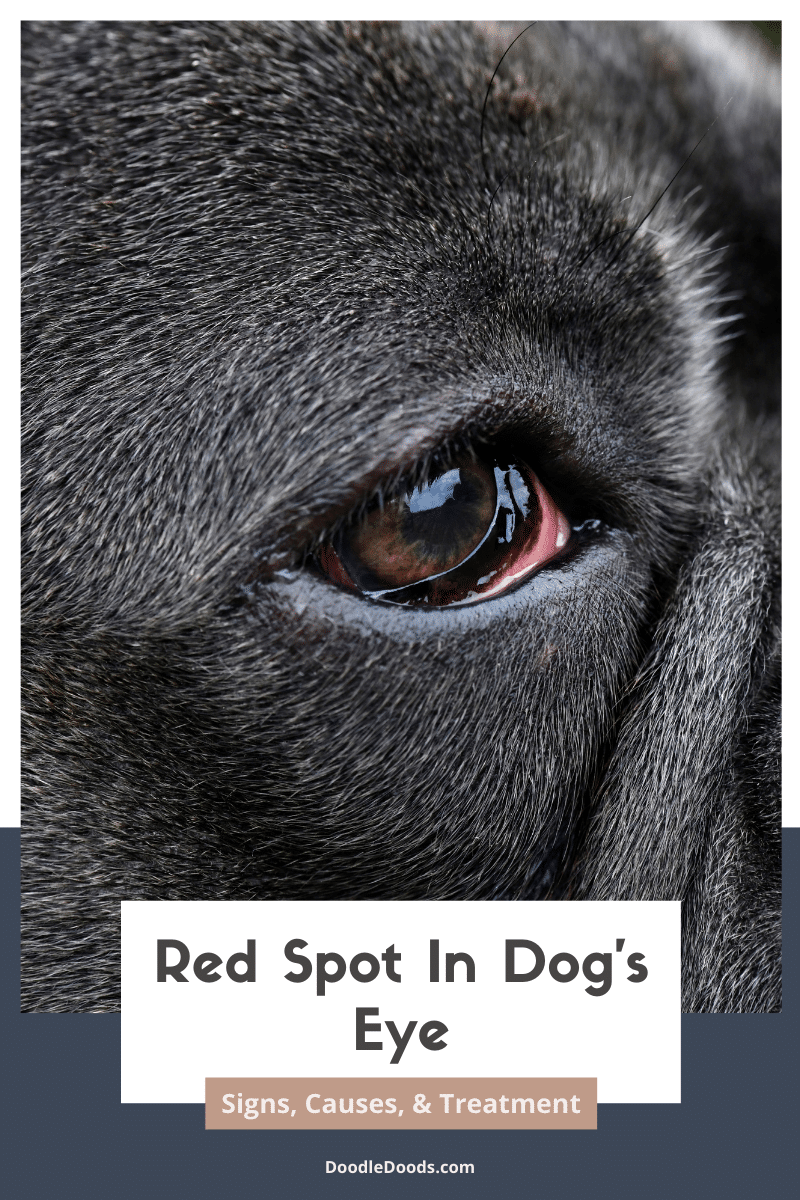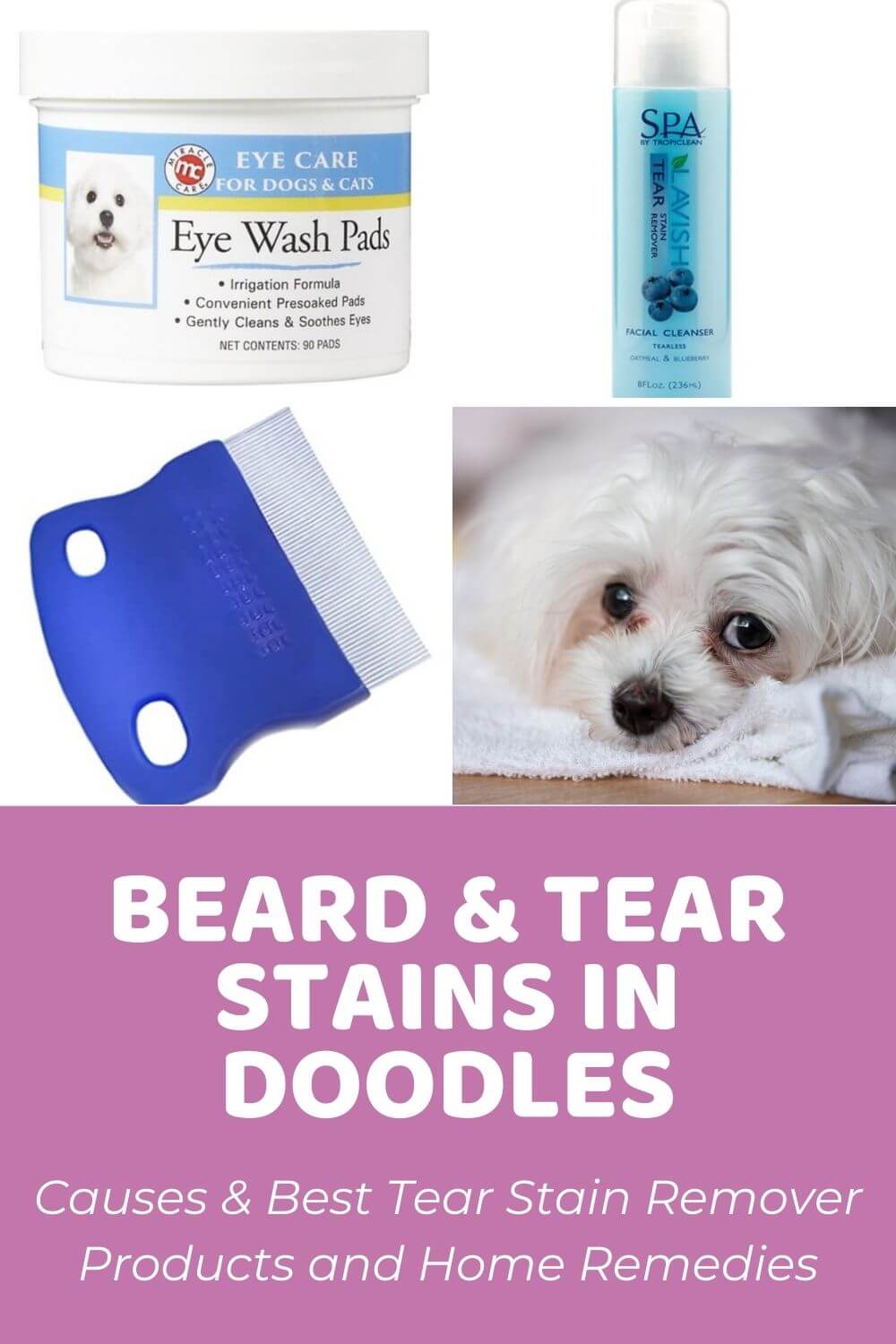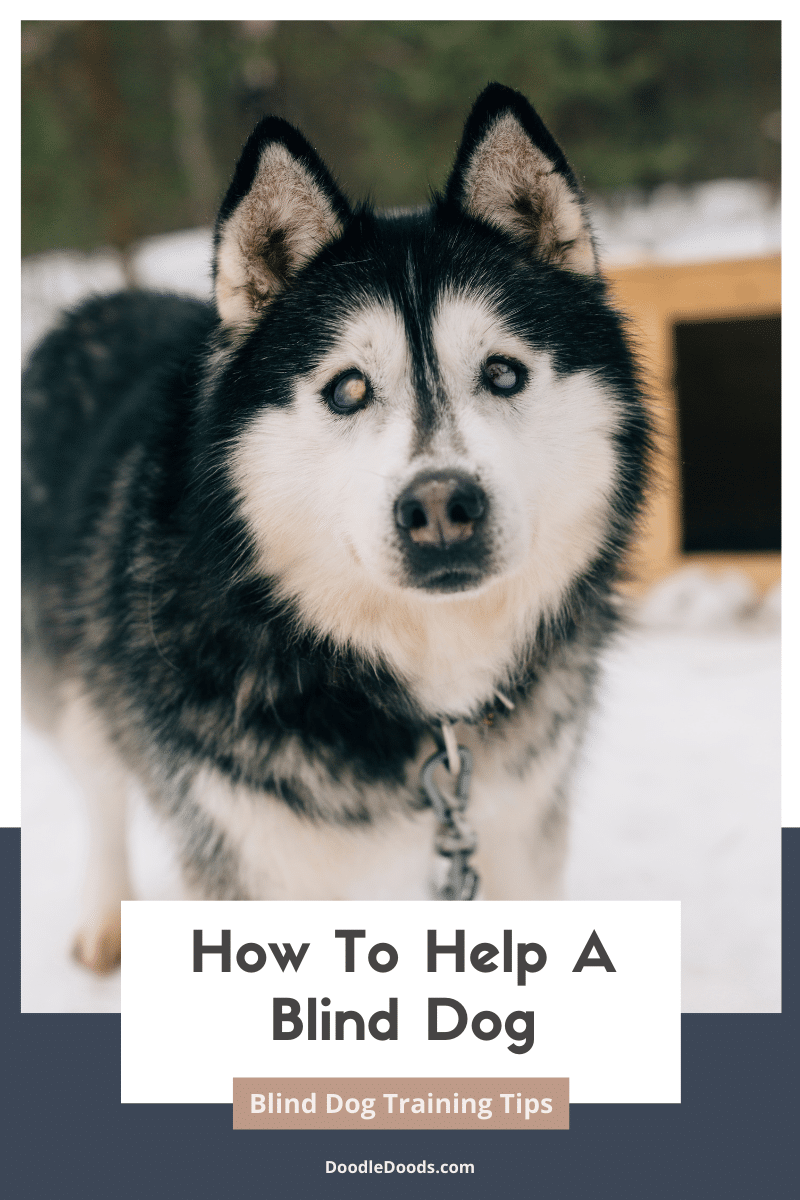As with us humans, dogs are at risk of numerous health conditions known to man. In this guide, we’re going to focus on dog eye problems, discuss how you can know when something’s not right, and talk about the best ways to prevent and treat some common eye conditions in dogs.
Table of Contents
- How Do I Know If My Dog Has Eye Problems?
- 8 Most Common Dog Eye Problems You Should Look Out For
- Proven Ways To Cure Dog Eye Infection
- The Best Eye-Care Routine For Your Dog
- Dog Eye Problems: FAQs
- Dog Eye Problems: Final Thoughts
How Do I Know If My Dog Has Eye Problems?
Although there are many different eye diseases and issues that dogs are at risk of, and their symptoms can vary greatly, the main signs are often rather similar. Some of them might be easier for you to notice, whereas others are a bit harder to detect.
Common symptoms of dog eye problems include:
- Watery eyes
- Inflammation of the eye or eyes, so that the eyes are red
- Tear stains around the eyes
- Squinting
- Rubbing or pawing at the eye
- Cloudy eyes
- Changes in behavior, including fear and anxiety of both familiar and new places, or startling easily
- Reluctance to use the stairs
- Bumping into things and people
8 Most Common Dog Eye Problems You Should Look Out For
The most common dog eye problems include dry eye, cataracts, inverted eyelids, conjunctivitis, glaucoma, cherry eye, corneal ulcers, and progressive retinal atrophy (PRA). Below you’ll find more in-depth information about each of those eye conditions in dogs. Some of them are more serious than others, but all of them require proper veterinary care to either treat or manage the disease.
We do have to note that not all eye diseases in dogs can be cured. However, with the right techniques, lifestyle changes, and medical intervention, you can make your pup’s life fulfilling regardless of their vision problems.
Dry Eye
Dry eye, also known as keratoconjunctivitis sicca (KCS) is a gradually developing eye condition in dogs. This eye condition often causes symptoms like redness and irritation, pain, frequent eye infections, cloudy eyes, and thick discharge. Of course, as dry eye can cause great discomfort and severe pain to a dog, they might also be squinting their eyes and itching them with their paws to soothe the discomfort.
Dry eye usually develops when a dog’s eyes don’t produce enough tears. It can also be caused by other underlying health issues, such as diabetes, thyroid issues, hormonal problems, infections, trauma, or as a side effect of certain medications. Furthermore, some breeds are more prone to dry eye. These include Cavaliers, Pugs, and Yorkshire Terriers, to name a few.
Although dry eye typically isn’t a curable disease, it can be managed with proper care and attention. As with any other eye issues in dogs, early veterinary intervention is vital. If left untreated, dry eye can develop into even more serious dog eye problems like eye ulcers and conjunctivitis.
Cataracts
Cataracts is a common genetic eye disease in dogs, but it can also be caused by eye injuries, or even diabetes. The first symptom of cataracts is that a dog’s eyes become cloudy or even white. It’s usually more common in elderly dogs and it has a progressive nature, often leading to blindness.
On the other hand, cataracts don’t always lead to blindness. However, it can affect your dog’s vision as the cloudiness progresses. In addition to that, unmanaged cataracts can lead to glaucoma, where there’s too much pressure in a dog’s eyes. We’ll talk about glaucoma a bit later on in this article.
Inverted Eyelids
Inverted eyelids, a.k.a entropion, is a dog eye condition where the eyelids roll inside and become inverted. As the eyelids roll inwards, they start to rub the cornea. As a result, it can cause pain and even lead to corneal ulcers – another serious dog eye problem that can lead to loss of vision. More on this later on in this guide.
The most common symptoms of entropion include squinting and excessive tearing, as the inverted eyelid irritates the cornea. You might also notice redness and inflammation around the eyes, discharge, and excessive blinking. Your pup might also rub and scratch their eyes.
Inverted eyelids are often hereditary and they affect many dog breeds. Entropion is usually diagnosed quite early on in life, within a puppy’s first year. This eye condition can be treated with surgical intervention, but it might require more than one surgery.
Conjunctivitis
Conjunctivitis, also known as pink eye, is a common eye condition both in humans and dogs. With pink eye, the eyes become inflamed, swollen, and often red. It also tends to cause itchiness and discomfort, tearing and excessive tearing, making your pup squint and paw at their eyes. Although conjunctivitis starts out as a seemingly harmless eye condition, it can lead to permanent eye damage if left untreated.
Pink eye can be caused by a number of different reasons. It could be due to allergies, viral and bacterial infections, or tumors in the eye area. It can also be caused by foreign bodies that have gotten into the eye or trauma to the eye area. Dry eye, entropion, and glaucoma can also lead to pink eye. In addition to that, some breeds are more prone to conjunctivitis due to their genetic predisposition.
Fortunately, pink eye can usually be treated with the right medications, either topical, oral, or both at once. If the condition is caused by an allergy, eliminating the allergic triggers would be the solution.
Glaucoma
Glaucoma is a serious and painful eye disease in dogs that can lead to blindness. This eye condition in dogs is caused by increased pressure within the eye, which usually happens when the eyes produce more fluid than they can drain out. This often manifests as excessive tearing, watery discharge, and tear stains around the eyes.
There are two types of glaucoma – primary and secondary glaucoma. Primary glaucoma usually occurs due to genetic issues, as certain dog breeds are at higher risk of it. Secondary glaucoma is usually caused by other eye conditions or injuries to the eye.
Moreover, dogs can suffer from either acute or chronic glaucoma. The former progresses very quickly and is considered a veterinary emergency, whereas the latter progresses more slowly. But regardless of the type, if you suspect glaucoma at any point, you should get your dog to the vet as soon as possible. The goal is to get the pressure within the eye back to normal levels to prevent permanent damage to the eyes and loss of vision.
Cherry Eye
Cherry eye refers to a condition where a dog’s third eyelid prolapses. Yes, dogs have a hidden third eyelid inside the lower lid that protects their eyes and also contains a tear gland. This hidden eyelid is held in place by ligaments. However, if those ligaments start to break down, the eyelid also prolapses and can eventually pop out.
But why is it called cherry eye? Once the third eyelid gland pops out, a red and swollen mass will pop out from the inner corner of the eye. Hence the name cherry eye. Depending on the severity of the prolapse, it can be only slightly visible or fully popped out of the eye socket.
Cherry eye is often a hereditary condition, as some dog breeds have weaker ligaments holding the third eye gland in place. Namely, brachycephalic breeds like Pugs and Boxers are at a higher risk of cherry eye. This eye condition in dogs shouldn’t be left unattended, as it can cause trauma to the cornea, inflammation, and lead to other eye problems in dogs, including loss of vision. Usually, a surgery can help treat this condition.
Corneal Ulcers
One of the more serious dog eye problems includes corneal ulcers. This condition occurs when a dog’s cornea becomes damaged. The cornea is that transparent membrane that sits on top of your dog’s eyelid. To be more precise, the cornea has three layers – the outer, medium, and inner layer of the cornea. If the two outer layers of cornea are damaged, it’s called corneal erosion or corneal abrasion. However, once the damage reaches the innermost layer of the cornea, it’s referred to as corneal ulcer.
Corneal ulcers are most commonly caused by a trauma to the eye. For instance, when your pup has accidentally gotten something sharp into their eye. It can also happen when another animal scratches their eye, or if they suffer from a burn to the cornea (this includes even chemical burns from certain unsuitable chemicals, even from shampoos). In addition to that, some bacterial and viral infections can also lead to corneal ulcers. Furthermore, diabetes, thyroid diseases, inverted eyelids, and dry eye can also lead to corneal ulcers.
Corneal ulcers tend to be very painful and they usually come with a wide range of other symptoms. Some of them include redness and swelling of and around the eye, excessive tearing, squinting and excessive blinking, rubbing and pawing at the eye, and eye discharge. You may also notice some behavioral changes in your dog, such as lethargy and loss of appetite.
Related:
Progressive Retinal Atrophy (PRA)
Progressive retinal atrophy (PRA) is another one of the more severe dog eye issues that has a progressive nature, usually leading to blindness. PRA is a genetic condition that can be prevented to some extent with proper health and DNA testing of the breeding dogs.
Essentially, PRA causes the cells in the eyes to deteriorate over time. It’s more common in senior dogs, but sometimes young puppies may also experience retinal dysplasia.
Fortunately, PRA isn’t painful for our canine pals. However, as it does lead to blindness over time, it will make your pup’s life a bit more complicated and confusing at times. That’s why you’ve got to be there for your dog and help them have the most fulfilled life even once they lose their vision. This usually happens about one or two years after the onset of PRA.
Proven Ways To Cure Dog Eye Infection
Before we discuss how to cure dog eye infections, we must note that it all starts with prevention. It goes as far as considering these dog eye problems way before your new puppy is even born – with proper genetic and DNA testing of the breeding dogs.
As we discussed briefly, many eye conditions are actually hereditary. This means that the best way to prevent them is by rigorously testing the breeding parents for any serious genetic conditions. For this reason, choosing a responsible breeder is vital, as they know the ins and outs of ethical breeding practices.
Also, don’t underestimate the value of a good hygiene routine and a high-quality diet. You’ll want to keep your pup’s eyes clean, prevent any irritations and infections, and also minimize any allergic reactions.
If at any point you notice redness, swelling, or excessive tearing around your dog’s eyes, we recommend you bring them in for a vet visit. A certified veterinarian will be able to properly diagnose an infection or another eye condition, and prescribe the right treatment for your pup.
In milder cases of eye infections, your vet might recommend you to rinse the eyes with a sterile saline solution or gently pat them with a cotton ball that’s been soaked in clean, warm water. The goal is to get rid of any discharge that could lead to overgrowth of bad bacteria.
In more serious cases, your vet might prescribe a course of antibiotics for your pup or another treatment option to get rid of the infection. But regardless of the severity of the infection, you should take your pup to the vet for proper assessment.
The Best Eye-Care Routine For Your Dog
As we said, many dog eye problems can be prevented and managed to a certain extent with a good eye-care routine. Here are some of the steps you should keep in mind when taking care of your pup that can help prevent eye infections and other common dog eye issues.
Notice Any Changes Early On
As a responsible pet parent, you should keep an eye on your dog’s behavior and appearance at all times. This is the single most effective way to notice any changes that might hint there’s an underlying medical condition to be dealt with.
This includes regularly inspecting your dog’s eyes. If you notice any redness or swelling, excessive tearing, or that your pup is trying to itch their eyes, it’s time to contact your vet. Another common symptom of eye issues includes cloudy eyes – if this starts to occur, you should take your pup to the vet as soon as possible.
Take Your Pup To Routine Vet Visits
Vet check-ups might not be our pups’ favorite thing in the world, but it can save your pup from a lifelong struggle with an illness and you from a lot of heartache. Make sure you take your dog to the vet at least once a year for a thorough wellness check. The sooner your vet notices that something’s not right, the better the prognosis for your pup.
Understandably, those routine vet visits can become costly over time. But that’s all part of becoming a pet parent. A great way to manage your costs and be prepared for unexpected vet bills is to subscribe to a trustworthy pet insurance plan. Here we’ve reviewed and compared some of the best options in the US.
Stay On Top Of Your Dog’s Hygiene & Grooming Routine
Proper hygiene and grooming is a key part in preventing dog eye problems, including infections. If your dog is prone to tear stains around the eyes, this is also a great way to keep that eye area neat and clean.
Firstly, we recommend you regularly remove the accumulating eye gunk around the eyes daily. You can either use a clean cotton pad, cloth, or even your clean fingers to gently remove that nasty gunk. You might also want to consider using a tear stain remover.
Secondly, if your dog requires regular haircuts, make sure to also trim the hair around their eyes. If the fur becomes too long, it can start to irritate the eye and attract bad bacteria. But if the fur around the eye isn’t too long, less moisture and tears will also get stuck in the fur.
Related:
Feed Your Dog A High-Quality Diet & Limit Exposure To Allergens
Some dog eye problems are often caused by allergies either due to unsuitable food ingredients or allergens in their environment. Most importantly, you should opt for a high-quality dog or puppy food formula that meets the nutritional requirements of the AAFCO. The formula should be nutritionally balanced and include only good quality ingredients.
In addition, if your dog is allergic to certain ingredients, such as chicken or wheat, make sure to avoid those ingredients at all costs. You should also look for formulas that don’t contain any artificial preservatives, fillers, colorants, or flavors. Likewise, it might be wise to avoid formulas that contain overly processed meat by-products.
By the way, a helpful tip is to use lubricating drops that are specially formulated for dogs during those times of the year when pollen is triggering your dog’s allergies. These lubricating eye drops can help prevent dryness, itchiness, and inflammation, making it more tolerable for your dog to go on walkies during spring and summer. Just make sure to use products that are pet-safe, and never use products that are made for humans.
Dog Eye Problems: FAQs
No, you shouldn’t ever use human eye drops on your dog. If your dog is experiencing itchiness, swelling, or redness in and around the eyes, it’s best to contact your vet for proper assessment. Once they’ve diagnosed your pup, they’ll prescribe the right kind of medication for your dog, whether it’s topical, such as dog eye drops, or oral medications.
Dogs can get eye problems during all life stages. However, many dog eye problems are more common in older adults and elderly dogs. That’s also down to the fact that with age dogs’ vision can worsen, just as in humans.
You can clean your dog’s eyes by removing eye gunk daily and making sure the eye area is generally clean and neatly trimmed. Gently remove the eye gunk with a clean, damp cloth, or use clean fingers to do that. If tear stains are an issue, you can also use a specially formulated dog tear stain remover around the eye area.
Is It Safe To Use Human Eye Drops For Dogs?
No, you shouldn’t ever use human eye drops on your dog. If your dog is experiencing itchiness, swelling, or redness in and around the eyes, it’s best to contact your vet for proper assessment. Once they’ve diagnosed your pup, they’ll prescribe the right kind of medication for your dog, whether it’s topical, such as dog eye drops, or oral medications.
What Age Do Dogs Get Eye Problems?
Dogs can get eye problems during all life stages. However, many dog eye problems are more common in older adults and elderly dogs. That’s also down to the fact that with age dogs’ vision can worsen, just as in humans.
How Can I Clean My Dog’s Eyes?
You can clean your dog’s eyes by removing eye gunk daily and making sure the eye area is generally clean and neatly trimmed. Gently remove the eye gunk with a clean, damp cloth, or use clean fingers to do that. If tear stains are an issue, you can also use a specially formulated dog tear stain remover around the eye area.
Dog Eye Problems: Final Thoughts
It’s in human nature for us to want the best for our four-legged companions, hoping they’ll never get sick or suffer from any medical conditions. However, as with any living being, we must be prepared for any potential health conditions. Dog eye problems may not affect every dog, but they’re certainly common. As long as you know how to spot the early signs and take quick action, you might be able to tackle the condition early on, and prevent it from progressing into a more serious issue. We hope this article has helped you understand the different types of dog eye problems and how you can prevent and treat those diseases. And as always, if you’re worried about your dog’s health, even if it seems as a minor thing, don’t hesitate to contact your vet for proper diagnosis and treatment.
Want to Learn
DIY Doodle Grooming?
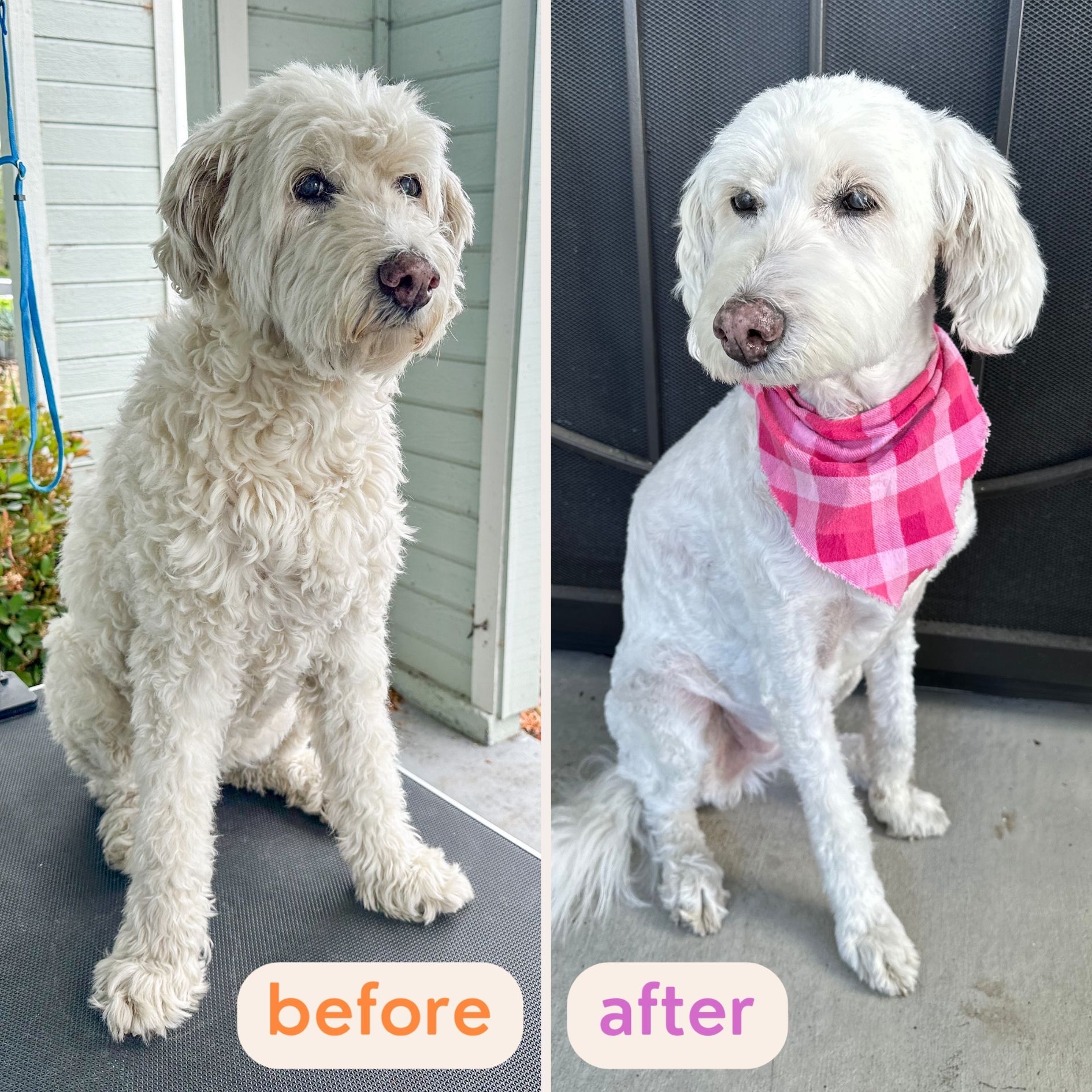
 “Every concern and question I had now has clear, practical solutions.” – Paula D.
“Every concern and question I had now has clear, practical solutions.” – Paula D.
 “These lessons have provided tremendous amounts of information.” – Steve B.
“These lessons have provided tremendous amounts of information.” – Steve B.
 “Buy the course and complain about how easy it is!” – Chris S.
“Buy the course and complain about how easy it is!” – Chris S.
Learn How To Groom Your Doodle At Home…
Safely…And Without Confusion:

